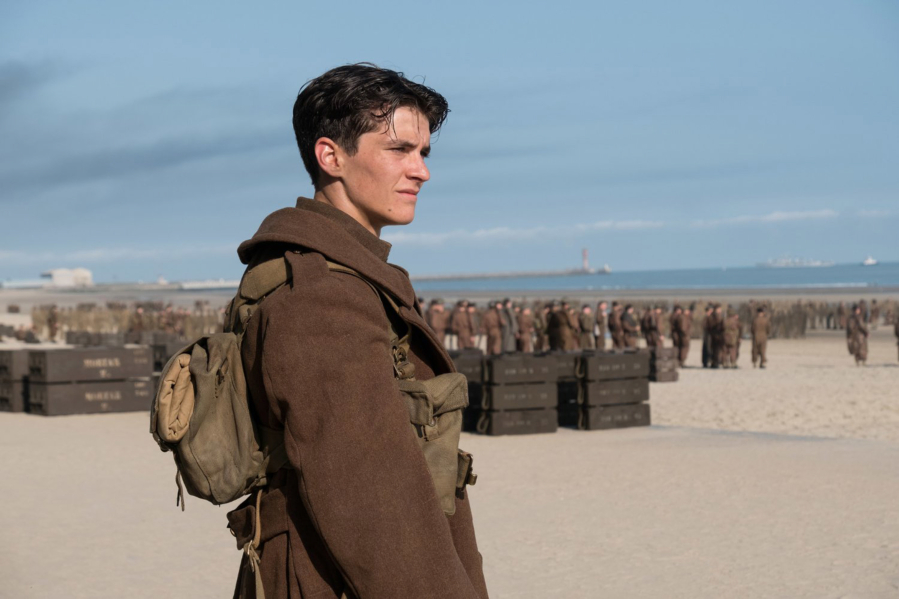Although “Dunkirk” looks at one of the most amazing military/civil operations of World War II (or maybe of any military conflict in history), it’s not a war movie. It’s Christopher Nolan’s view of a war movie.
Just as he looked at the broader battle of good vs. evil through his “Dark Knight” trilogy, tied the sci-fi genre into creative knots with “Interstellar” or redefined the mystery movie with his mind-twisting “Memento,” “Dunkirk” has the trappings of a standard war movie but is structured more to focus on community heroism rather than the single savior and is designed more to build suspense than take a linear look at the particular moment in time. It’s an unorthodox style but being different has become the trademark of a Nolan production.
The gamble is that with his past works, Nolan had creative flexibility because he was working in fictional worlds, from the pages of comic books to the inner workings of the mind. Now, he’s treading on sacred memories bringing events of Dunkirk to the screen.
The real world Nolan has selected as his latest project looks at events that happened in 1940, when more than 400,000 British and French soldiers found themselves surrounded by the German army on three sides with the English Channel to their backs. Every attempt to escape was thwarted by the German ships and airplanes that relentlessly attacked and killed thousands.
Death or capture appeared the only choices. But a last-ditch effort had British civilians piloting their small vessels through the choppy waters as part of a rescue mission. The brave efforts of all involved became one of the biggest moments in World War II history.
Nolan tells a truncated version of that story (cutting nine days down to one) but not in the standard style that has worked for films like “The Battle of the Bulge,” “The Longest Day” or “Saving Private Ryan.” Military movies have always tended to start with an inciting incident, follow the efforts to stop the enemy and see the efforts through the eyes of either one hero or small band of brothers. The result would be an audience-pleasing victory.
The direction Nolan uses is to weave three stories — on the land, sea and in the air — together playing with the time elements so that often events happen out of order. Nolan’s chief concern is to build tension making audiences wonder how each of the three storylines will play out and eventually come together. This approach is why Nolan spent more time watching Alfred Hitchcock thrillers than war movies. The director’s biggest influence in making “Dunkirk” was Henri-Georges Clouzot’s tale of four men transporting unstable materials, “The Wages of Fear.”
Nolan’s drive to build tension and suspense is magnified by composer Hans Zimmer, a regular contributor to Nolan’s work, whose soundtrack features a score that is constantly building in sound and fury mixed with a haunting timepiece rhythm that drives home the valuable seconds being lost in each frame. It’s the best use of music and the rhythms of a clock to build suspense since the 1952 classic “High Noon.”
Nolan needed this suspense because when he slips into any familiar war movie territory, the production offers little new. There are several major dogfights but Nolan’s versions show little progression from the beautifully presented air battles in so many wars movies since “Wings” in the 1920s. The same goes for the multiple ship-sinking sequences that are well staged but offer no surprises.
It doesn’t matter that almost the entire movie was shot with IMAX cameras to create a true large-screen experience. The images look great on a massive screen but size doesn’t make up for some standard staging.
Nolan’s focus on the large-screen format took time away from the kind of detailed character development he has used in his past works. And that hurts the overall product. There are a couple of individual tales, including one brave civilian played with great poise and polish by Mary Rylance, who looks to be the representative of the civilians as a whole.
Kenneth Branagh is at the center of the movie’s biggest emotional moment. His ability to relate a lifetime of experience through a single glance shows that Nolan’s decision to keep the dialogue in the film to a minimum works only with high-caliber actors like Branagh.
There are a few soldiers who weave their way through more than one of the three storylines, but none are given the kind of long development time that makes an audience care for them as individuals.
Nolan needs the viewer to accept that this isn’t a standard war movie. He also needs the audience to remember this is not a documentary so the historical accuracy is more of a suggestion than fact.



